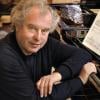
The San Francisco Symphony program that was played and conducted by the distinguished pianist András Schiff last weekend at Davies Hall featured music of Bach and Mendelssohn, contrasting works by two composers separated by almost exactly a century.
The program had the potential to illuminate the relationship between these two composers — both fascinated by counterpoint, both committed to a music of Lutheran worship, both expert keyboard players themselves, both astonishingly prolific, and both working in Leipzig.
The music was performed with skill and commitment. But the two halves of the program (the first, Bach; the second, Mendelssohn) seemed incompatible, and the connections between the two remained largely unexplored.
The Bach section opened with two keyboard concerti originally intended for the harpsichord, but here performed by András Schiff on the piano, as he gently and effectively conducted a small string ensemble. Schiff is widely known as one of the greatest interpreters of Bach on the piano, and his playing was, as expected, masterful in conception and execution.
He led off with the sunny D Major Concerto (No. 3, BWV 1054), following it immediately with the less well-known but perhaps more complex Concerto No. 4 in A (BWV 1055). Schiff brought energy, intelligence, and vigor to the keyboard solos, articulating Bach’s fluent, exuberant lines on a Bösendorfer piano with a rich, viola-like timbre.

The Keyboard Concertos, like the Orchestral Suite No. 3, BWV 1068 in D major, that followed them, show Bach in his civilian clothes, as it were; they are vivaciously secular, written not for Leipzig’s Thomaskirche, but for the nearby gathering spot of Zimmerman’s coffee house. The concertos’ dazzling virtuosity, the orchestral suite’s vivacity, with its three high trumpet parts, the galanterie of its courtly dance movements, and the overall intimacy and nuance of these brief masterpieces are not Bach in his grand style, but at his most accessible.
These gemütlich pieces are a far cry from the monumental assertiveness of the St. Matthew Passion or the B Minor Mass, or the intense soul-searching of a cantata like BWV 12, Weinen, Klagen, Sorgen, Zagen (Weeping, Lamenting, Worrying, Fearing). Yet it is that monumental Bach, not the Bach of the coffee-house concerti, that Mendelssohn must have had in mind when in 1840 he composed the earnest Lobgesang (Song of Praise), which constituted the second half of the symphony program.
Lobgesang (Opus 52) is clearly intended to rival not only the monumental works of Bach but also Beethoven’s Ninth, that great bugbear of the 19th century. Like the Ninth, Lobgesang — eventually but wrongly labeled as Mendelssohn’s “Second Symphony” — consists of three long orchestral movements followed by an extended and eclectic finale for soloists, chorus, and orchestra. Unlike Beethoven’s honoring of the pagan “Joy,” Mendelssohn’s praise is explicitly and resolutely religious, a celebration of the majesty of the Judaeo-Christian God.

The orchestra played its heart out in Lobegesang. The trombones were in their glory, opening the piece with a stalwart and resolute (if somewhat tedious) theme; the string sections lived up to Mendelssohn’s daunting demands for octave-leaping arpeggiations; and the winds, especially the clarinet at key transition moments, never faltered. The chorus was magnificently grand (though, in the strange architecture of Davies Hall, far removed from orchestra, conductor, and most of the audience). The soloists beautifully met Mendelssohn’s high-octane demands (tenor Michael Jankosky was especially powerful in his evocation of the anguish of death).
And yet, Lobgesang fell flat. Why? Partly because it pretends to a seriousness that it does not earn. Late in the piece, we are told of the sorrows of death, but, both vocally and musically, this dark side of faith has been absent through the earlier sections of the piece. Beethoven, on the other hand, makes us believe in the power of Joy by preceding his “Ode to Joy” with three complex and powerful orchestral movements, and tells us unmistakably what it is to be without joy.
Mendelssohn wants to tell a story of redemption through faith, but neither the text nor the music manages to tell us what we are being redeemed from. The famous chorale that marks the midpoint of the finale, “Nun danket alle Gott” (Now thank we all our God), comes with little sense of what it is we are thanking God for.
Perhaps a Bach cantata as the first half of the program might have helped us see more of what Mendelssohn had in mind. But, in contrast to the sprightly secular Bach of the first half, Lobgesang came off as obsessive in its faith and single-minded in its aesthetic.
A further problem is that the Mendelssohn piece is so very long, some 70 minutes. Programming a concert with such a piece suggests taking a delicate approach to what precedes it. In this case, the approach was heavy-handed, as the first half alone lasted some 65 minutes, making for a concert of over two and a half hours. Wonderful as Bach and András Schiff are, we did not need two keyboard concertos and an orchestral suite, lengthened even further by the long delay of moving the piano between the concertos and the suite.
Issues of programming like these need to be anticipated by the Symphony, in the interests of concertgoers and artists alike. If we are to consider reviving a piece like Lobgesang (and I for one am grateful for the chance to hear it), the program should be constructed in a way to let us listen to it with fresh and informed ears.




